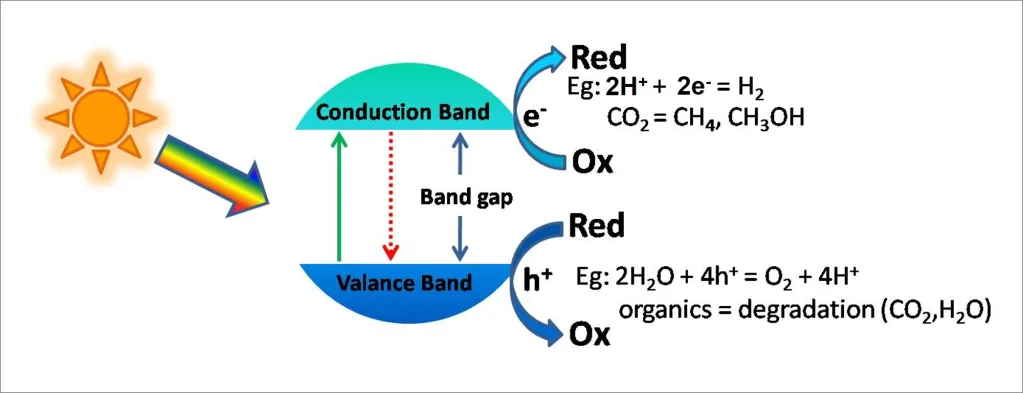Photocatalytic: Unveiling the Power of Light-Driven Reactions
I. Introduction
A. Definition of Photocatalytic
Photocatalysis, at its core, involves a chemical reaction initiated by light absorption in a photocatalyst. The process harnesses the power of light to drive reactions that wouldn’t occur under normal circumstances.
B. Importance of Photocatalysis in Modern Applications
In the 21st century, photocatalysis plays a pivotal role in various fields, ranging from environmental remediation to cutting-edge medical technologies. Its significance lies in its ability to facilitate eco-friendly processes and contribute to sustainable practices.
II. How Photocatalysis Works
A. Explanation of Photocatalytic Reaction
The magic of photocatalysis lies in its ability to create reactive oxygen species upon exposure to light. These species then initiate chemical reactions, paving the way for a multitude of applications.
B. Key Components Involved
Understanding the key components, such as the photocatalyst and light source, is crucial for grasping the intricacies of photocatalysis. This section delves into the specifics that make this process possible.
III. Applications of Photocatalysis
A. Environmental Applications
Photocatalysis has proven to be a boon for environmentalists. From air purification to water treatment, the article explores how this process aids in creating a cleaner and healthier planet.
B. Photocatalysis in Healthcare
In the realm of healthcare, photocatalysis has found its way into disinfection processes and medical equipment sterilization. This section sheds light on its contributions to the healthcare industry.
C. Industrial Uses
Industries are leveraging the power of photocatalysis for various applications, including self-cleaning surfaces and energy-efficient manufacturing processes. We’ll explore the industrial landscape shaped by this innovative technology.
IV. Advantages of Photocatalytic Processes
A. Environmental Benefits
Discover the positive environmental impact of photocatalysis, including reduced pollution and waste elimination. The article emphasizes the role of photocatalysis in fostering a sustainable future.
B. Energy Efficiency
Explore how photocatalytic processes contribute to energy efficiency, making them a desirable option for industries aiming to reduce their carbon footprint.
V. Challenges and Solutions
A. Common Challenges in Photocatalysis
No technology is without its challenges. This section addresses common hurdles faced in the implementation of photocatalysis and provides insights into overcoming them.
B. Ongoing Research and Innovations
Stay updated on the latest research and innovations in the field of photocatalysis. The article highlights ongoing efforts to enhance efficiency and broaden the scope of applications.
VI. Photocatalytic Materials
A. Types of Photocatalytic Materials
Different materials exhibit photocatalytic properties. This section categorizes them and provides an overview of their unique characteristics.
B. Properties of Effective Photocatalysts
Understanding the properties that make a photocatalyst effective is crucial for successful applications. Dive into the specific attributes that define an efficient photocatalytic material.
VII. Future of Photocatalysis
A. Emerging Technologies
Explore the cutting-edge technologies poised to shape the future of photocatalysis. From nanomaterials to advanced reactors, the article delves into what lies ahead.
B. Potential Areas of Growth
Identify potential areas where photocatalysis can witness significant growth. This section examines industries and applications that could benefit from further advancements in this field.
VIII. Tips for Implementing Photocatalysis
A. Best Practices for Photocatalytic Applications
For those considering the implementation of photocatalysis, this section provides valuable insights and best practices to ensure optimal results.
B. Ensuring Optimal Performance
Learn how to maximize the performance of photocatalytic processes by addressing key factors such as catalyst preparation and system optimization.
IX. Case Studies
A. Real-world Examples of Successful Photocatalytic Projects
Discover real-world examples of how photocatalysis has made a positive impact. Case studies highlight successful projects across different industries.
B. Impact on Various Industries
Explore the transformative effects of photocatalysis on various industries, from construction to healthcare. Understand how this technology is reshaping the way we approach problem-solving.
X. Conclusion
A. Recap of the Importance of Photocatalysis
As we conclude our exploration of photocatalysis, it’s essential to recap its importance in fostering sustainable practices, improving environmental conditions, and revolutionizing industries.
B. Future Outlook
The future of photocatalysis looks promising, with continued advancements and innovative applications on the horizon. Stay tuned for what the world of science and technology has in store.






